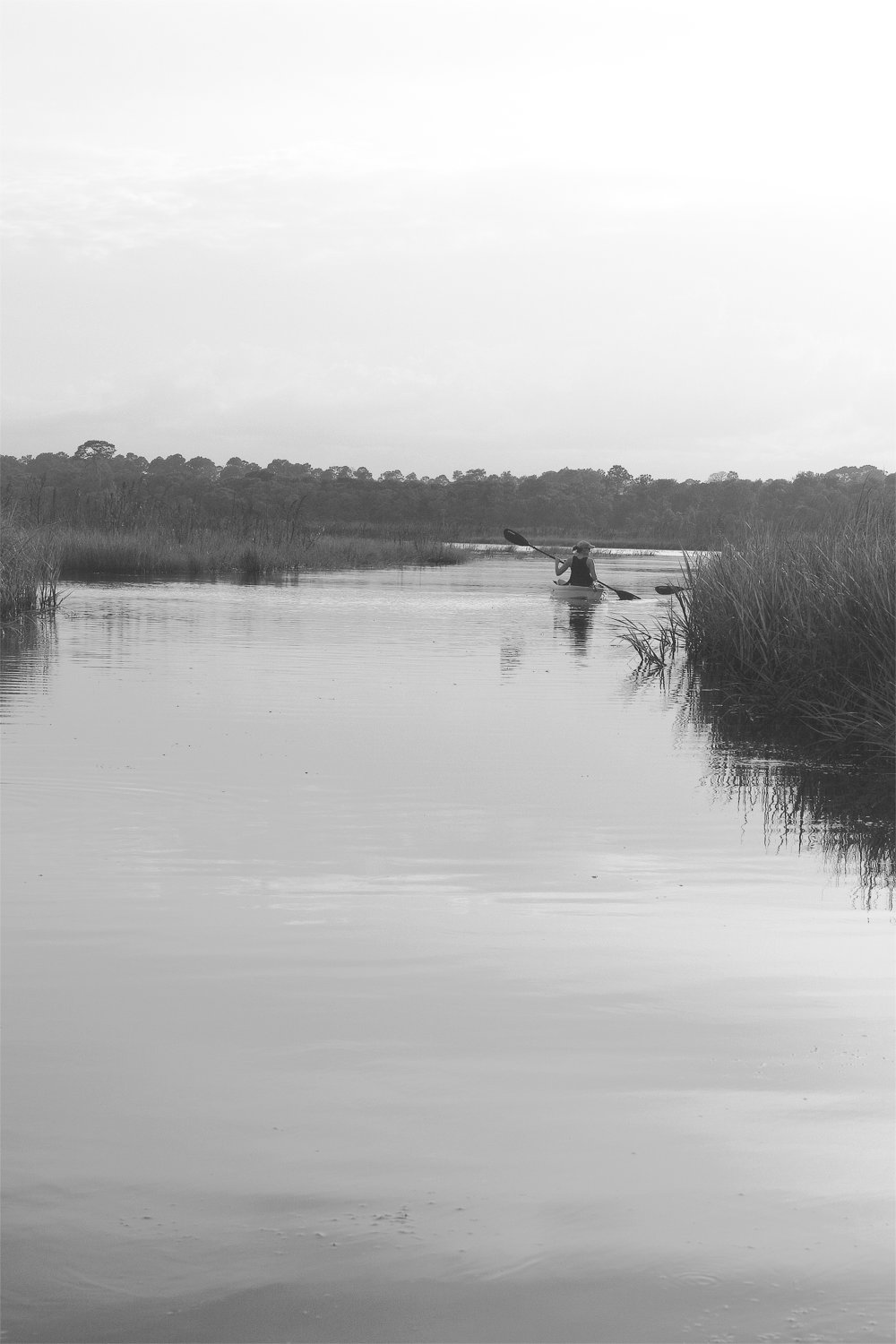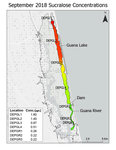Zero calorie sweetener found in water at Guana Lake
Study of Guana Lake water quality shows evidence of wastewater originating north of Mickler’s Weir
There is currently a crisis at the Indian River Lagoon on the Atlantic Coast of Florida. The carcasses of belly up fish rim the shoreline and dead manatees waft in clusters, floating together in the hot sun. Outside the lagoon, tourists bypass highway junctions and fishing poles collect cobwebs in their garages. The ecological damage to the poorly drained estuary might as well be the looming thunder of an economic storm cloud rolling over the entire state. Currently, a parallel story is playing out again at Lake Okeechobee and St. Lucie on Florida’s Southwest coast.
It’s no news that the blooms of deadly blue-green algae and red tide caused the situation, and human pollution is likely to blame. In contaminated waters, when the conditions are right, the blooms will literally choke the life out of their surroundings, in turn causing a ripple effect big enough to shake the home of Disney World.
Nobody can live without water. Clean recreational waters are especially vital in the Sunshine State where tourism is the running currency of almost every county.
The Guana Tolomato Matanzas National Estuarine Research Reserve is alive and well. However, there is evidence that human waste is making its way to the lake and a grassroots effort to investigate it is underway.
According to a two-year summary report of Guana’s water quality, a north-south gradient level of sucralose was found, indicating that human wastewater was originating north from Mickler’s Weir. Nikki Dix, research director and co-author of the report said sucralose indicates human waste influence since the artificial sweetener passes through the digestive system mostly undegraded. She says the levels at Guana are most likely from wastewater irrigation.
“We don't have specific sources, but because it was sucralose, we know it’s human,” Dix said. “It could be a few potential sources. One is wastewater treatment effluent because sucralose doesn’t get treated by wastewater treatment process. In Ponte Vedra they do a lot of wastewater reuse. So, they are using it on golf courses and stuff. When that runs off it can get down to the lake.”
Interestingly, Dix was able to determine irrigation as the main influence, due to the lack of Acetaminophen in the water as well. The pain reliever would also be present in human waste if the source was from raw sewage, which she was able to rule out. Acetaminophen is removed by the wastewater treatment process. In addition, she said there were very few septic systems still being used by residents in the area.
Phosphorus and nitrogen are the main components of eutrophication, which is the excessive richness of nutrients in a body of water that causes algae blooms. The chemicals are both found in human waste which exist in wastewater treatment facility effluent, re-use water, leaky septic systems and fertilizer runoff. As for specifically where these sources originating, Dix is unsure.
“The lake is showing signs of stress,” Dix said. “There are high levels of nitrogen and high algae levels. We don't quite understand where the sources are coming from, but the data indicates that human wastewater might be one source. Fertilizers are another potential source of nutrients.”
Dix said that while the levels have turned up high, particularly highest near the dam, there are still further studies to be done and it’s not a cause for major alarm. For one, the levels of sucralose previously reported from News 4 Jax as being at “levels higher than any of Florida’s dirty wastewater treatment facilities,” was falsely reported due to erroneous information.
In addition, in the two years the study was conducted, a comparison of the averages showed a decrease in harmful pollutants. Dix did note, however, that “things always go up and down year to year so for a real trend over time you need a lot more data.”
Also, it turns out that Ponte Vedra residents do truly love the GTM and are willing to fund studies to make sure it’s thriving. The two-year water quality study of the GTM wouldn’t have been possible without the “momentous community interest in the health of Guana Lake,” according to the report.
“The study that we've been doing in Guana river and Guana Lake was really started by the public interest, the friends of the GTM reserve raised $10,000 to get us jumped started and we were able to pay for laboratory analyst samples. After that we got more support from state agencies and we got grant money.” Which, she says, they wouldn’t have received without the initial donation.
In addition to donating to the Friends of the GTM Research Reserve, Dix said other ways residents can help improve the water quality of Guana Lake include planting Florida-friendly landscaping, cleaning up all pet waste and watering lawns less. The less water runoff from lawns means the less pollutants flow to the river that in turn feeds the lake.
To donate to the GTM Research reserve, go to gtmnerr.org/donate.










